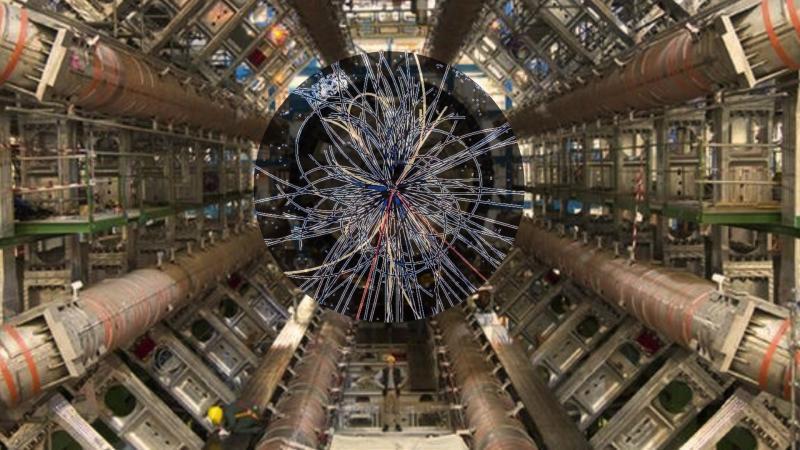
CERN Scientists Shedding Light on Antimatter & Universe’s Origins
The mysteries of antimatter have long fascinated scientists, and a recent breakthrough at CERN’s Large Hadron Collider (LHC) has brought us closer than ever to unraveling its secrets. The ALICE collaboration, a team of researchers from around the world, has confirmed the first evidence of antihyperhelium-4, a type of exotic particle. This discovery offers valuable insights into the fundamental forces of nature, shedding light on the balance between matter and antimatter, and the universe’s early moments.
Antimatter is a type of matter that has the same mass as regular matter but opposite charges. It is a fascinating area of research, as our universe is predominantly made up of regular matter, with antimatter being relatively rare. The existence of antimatter is a fundamental aspect of the Standard Model of particle physics, which describes the behavior of fundamental particles and forces.
The Large Hadron Collider, located at CERN in Geneva, Switzerland, is a powerful tool for studying these exotic particles. By colliding heavy ions at incredibly high energies, scientists can recreate the extreme conditions that existed in the early universe, just after the Big Bang. This allows them to study the behavior of particles and forces in a way that is not possible with traditional experiments.
The ALICE collaboration, led by Dr. Joerg Schukraft, has been studying the collisions of heavy ions at the LHC for several years. Their latest discovery is a significant breakthrough in the field of antimatter research. By analyzing the data collected from these collisions, the team has identified the first evidence of antihyperhelium-4, a type of antinucleus.
Hyperhelium-4 is a type of nucleus that is composed of four protons and two neutrons. It is a relatively stable form of matter, and its antiparticle, antihyperhelium-4, is a type of antimatter. The discovery of antihyperhelium-4 is significant because it provides evidence of the existence of antimatter in the universe.
The ALICE collaboration’s findings are the result of a rigorous analysis of data collected from the LHC. The team used a sophisticated algorithm to identify the particles produced in the collisions, and then analyzed the properties of those particles to determine if they were antimatter or regular matter.
The discovery of antihyperhelium-4 is not only significant for our understanding of antimatter, but also for our understanding of the universe’s early moments. The universe is thought to have been dominated by antimatter in the early stages of its formation, with regular matter emerging later. The discovery of antihyperhelium-4 provides evidence of this process, and sheds light on the balance between matter and antimatter.
The ALICE collaboration’s findings are a testament to the power of scientific research and collaboration. The discovery of antihyperhelium-4 would not have been possible without the combined efforts of scientists from around the world, working together to analyze the data collected from the LHC.
The implications of this discovery are far-reaching, and have the potential to revolutionize our understanding of the universe. The existence of antimatter is a fundamental aspect of the Standard Model of particle physics, and the discovery of antihyperhelium-4 provides evidence of its existence. This discovery also sheds light on the balance between matter and antimatter, and the universe’s early moments.
In conclusion, the discovery of antihyperhelium-4 by the ALICE collaboration at CERN’s Large Hadron Collider is a significant breakthrough in the field of antimatter research. This exotic particle offers valuable insights into the fundamental forces of nature, and sheds light on the balance between matter and antimatter, and the universe’s early moments.
News Source:
https://researchmatters.in/news/exotic-antimatter-spotted-heavy-ion-collisions-lhc






